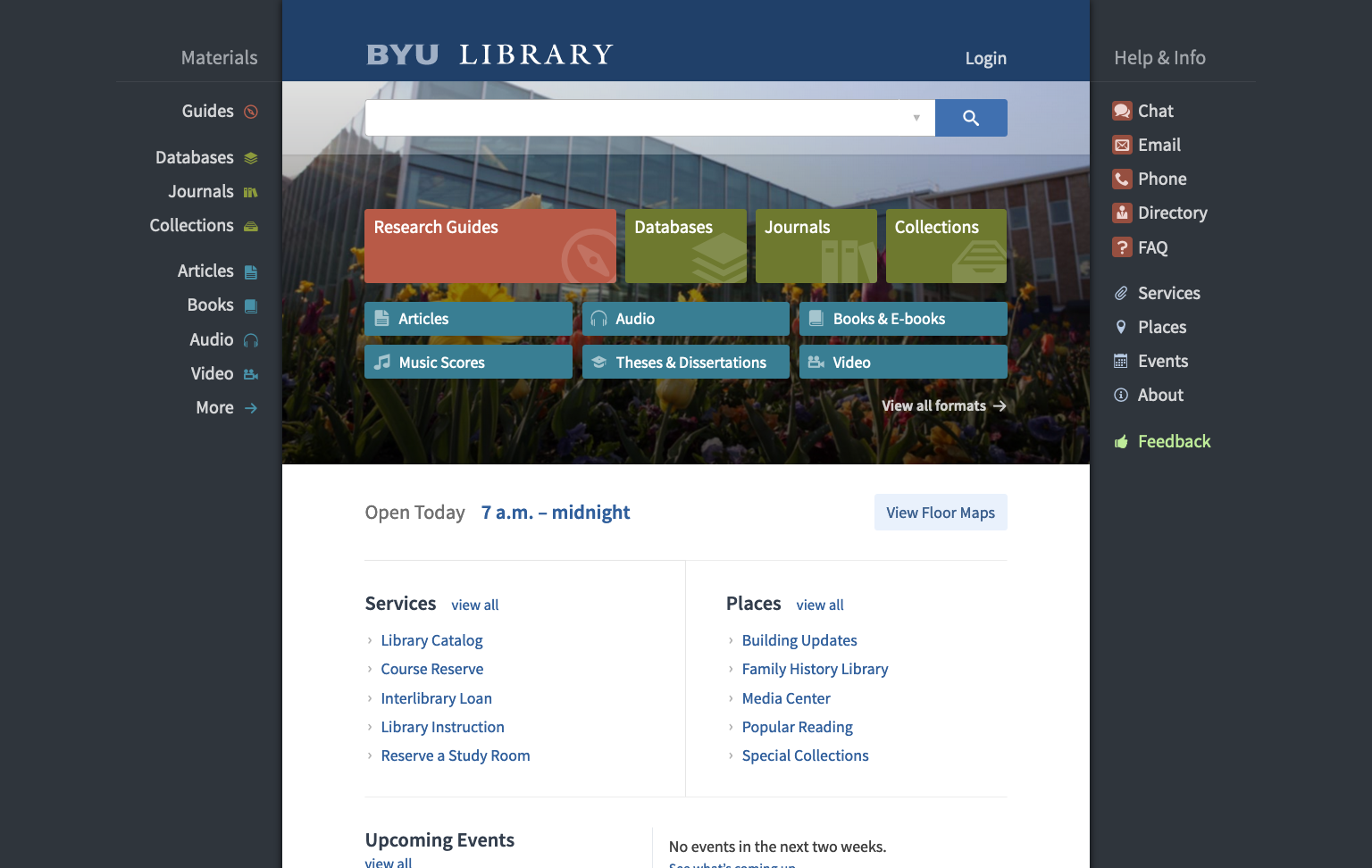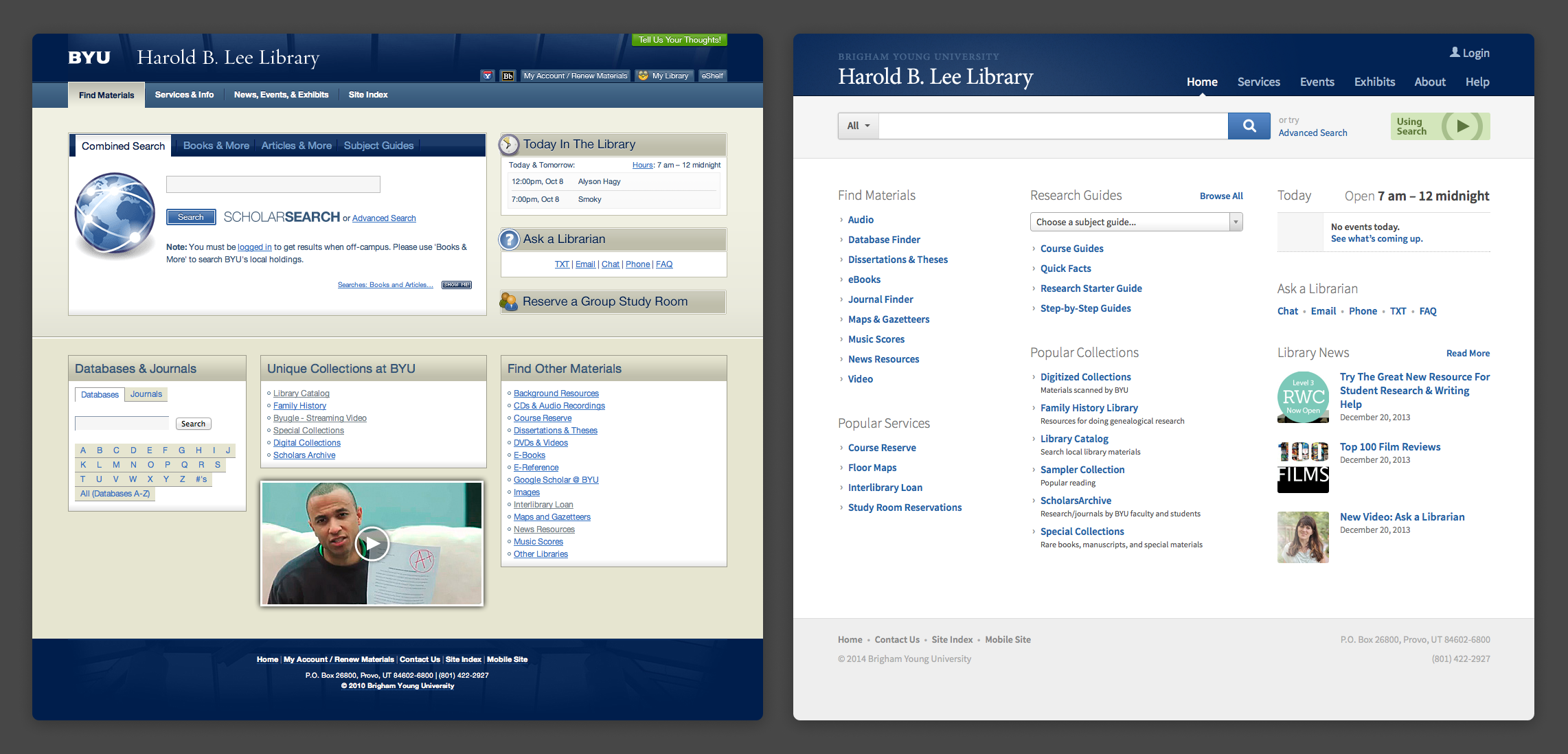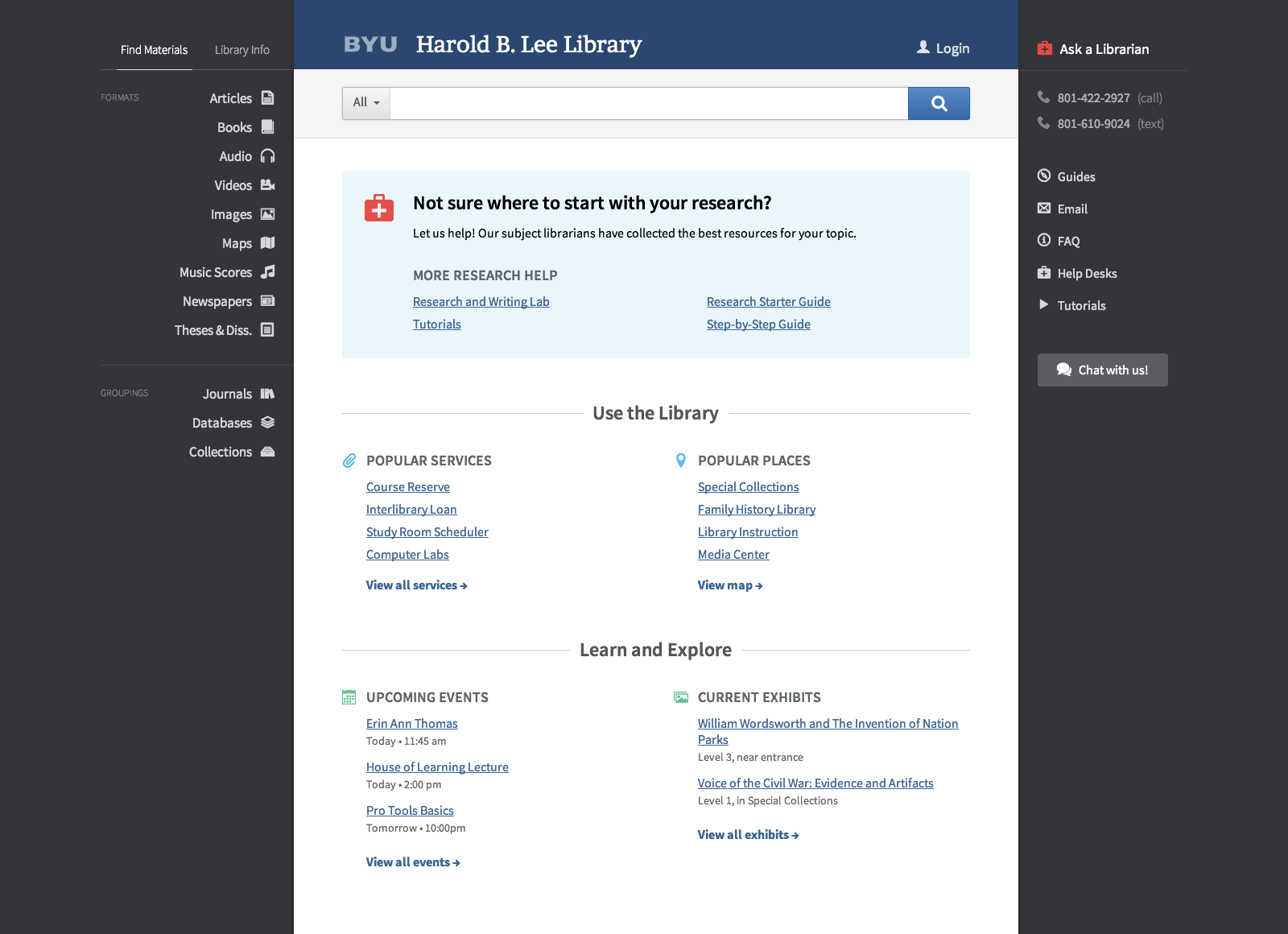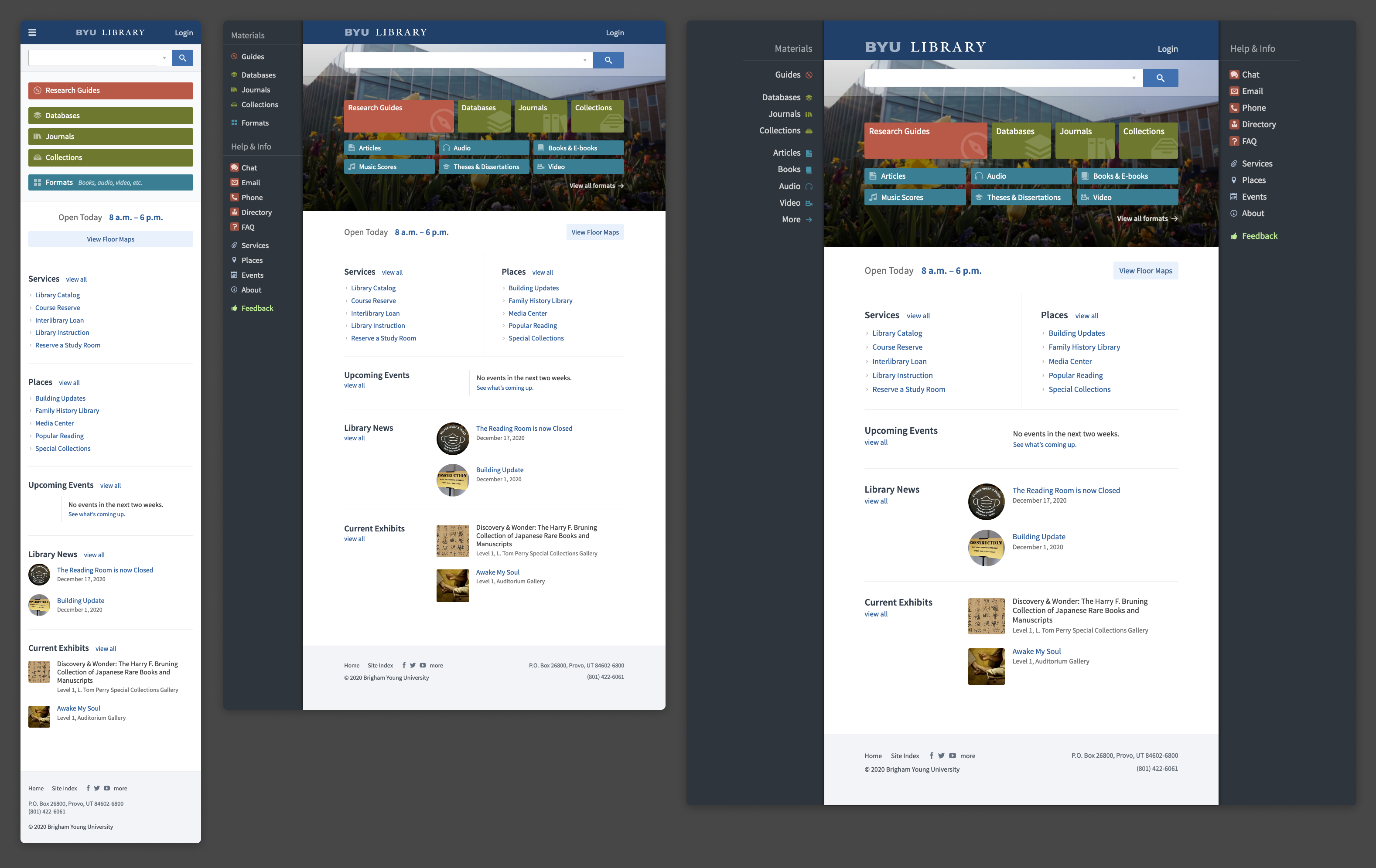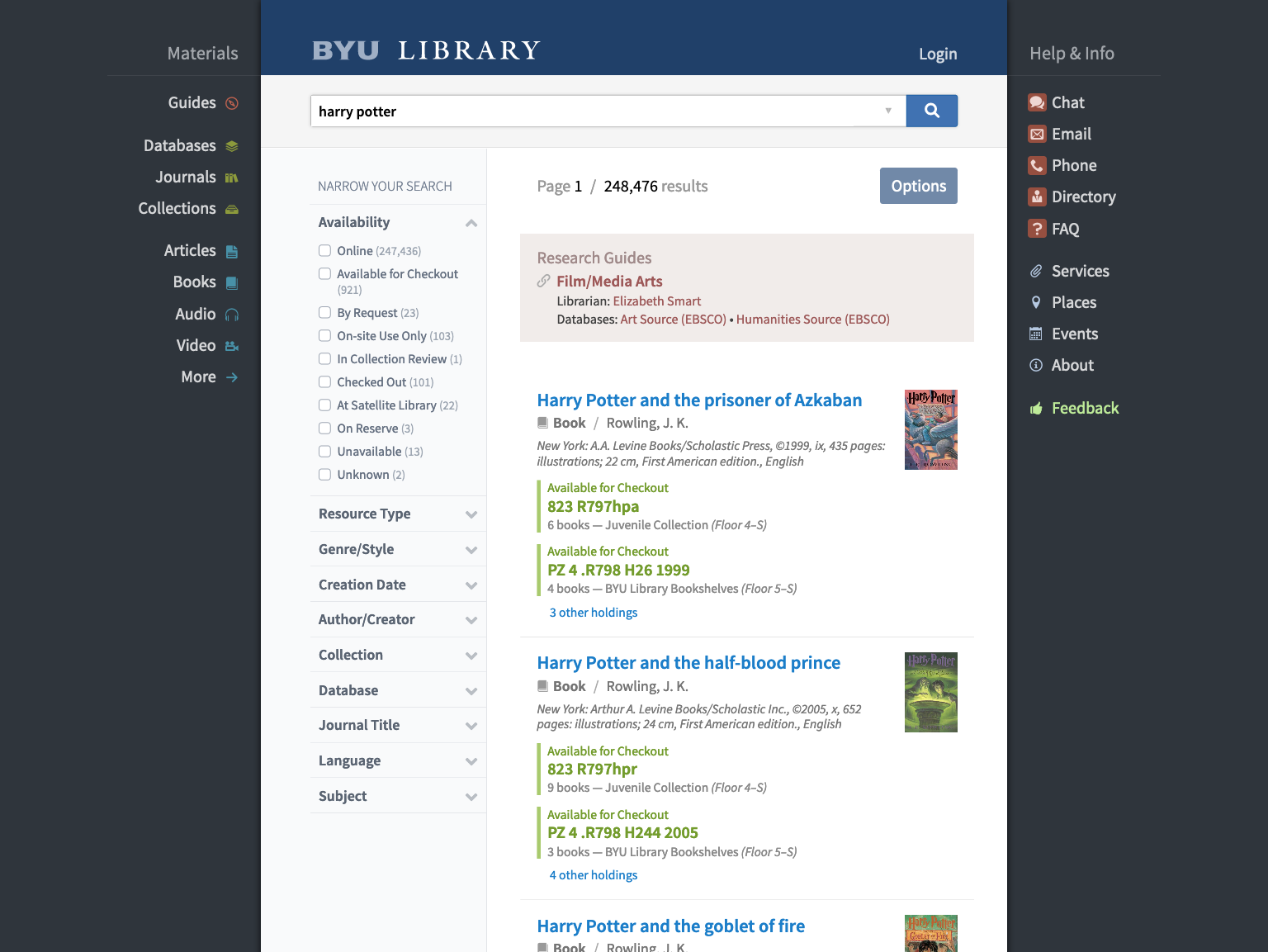This is not a full case study, because I unfortunately did not document most of the process beyond a few saved screenshots.
Also note that I primarily acted in a supervisorial capacity on this project, other than a few parts which I’ll specifically mention. I supervised a junior designer, who I’ll call G.
The stewardship of the website belonged to a committee of librarians, the Web Working Group. I updated them on progress throughout the process, and they gave feedback which G and I then incorporated into the designs and evaluated with a small user test.
